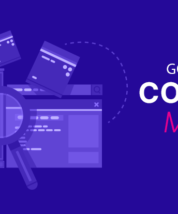Overview
How can we maximize this CAC to ensure long-term profitability?
In this article, we’ll take a look at 5 tangible, tried-and-tested tactics for lowering Customer Acquisition Cost while preserving the quality and quantity of leads, and discover how to constantly analyze and adjust your strategy for optimum results.
Understand and analyze your current cost of acquisition
To effectively drive your growth, begin by establishing a clear vision of your current performance by understanding and analyzing your Customer Acquisition Cost (CAC).
Why is it important to calculate the Cost of Customer Acquisition in the first place?
Before optimizing any process, it's essential to understand your current position.
An accurate CAC calculation provides a clear picture of current performance.
The CAC or Customer Acquisition Cost is calculated by adding Marketing Costs and Sales Costs and dividing by the Number of Customers Acquired.
To illustrate, if you invest €20,000 in a campaign and succeed in attracting 50 customers, your Customer Acquisition Cost will be €400/customer.
However, it's also important to understand the subtleties of this rate in order to target the actions to be taken.
Essential elements to take into account when calculating B2B Customer Acquisition Costs
Explore all communication possibilities, not just advertising spend.
You also need to consider:
- Remuneration and bonuses for marketing and sales teams
- Tools and software used to automate and manage campaigns.
- Budget allocation for agencies or external consultants.
- Fees for marketing events or product presentations.
Segment CAC by channel, campaign or customer
Each channel or campaign has its own performance. Take, for example, SEO campaigns, which could generate a lower customer acquisition cost than advertising campaigns.
Similarly, certain customer profiles can generate higher revenues, which indirectly impacts overall performance.
Identify friction points and unnecessary costs in your acquisition process:
Note that low conversion at a certain stage in the acquisition process (e.g. between the first contact and the first meeting) can be a warning sign.
To pinpoint these problems, we recommend using analysis tools such as Google Analytics or a CRM.
5 Operational strategies to reduce your B2B CAC
Reducing the Customer Acquisition Cost (CAC) in B2B is a strategic challenge for any company wishing to optimize its ROI and accelerate its growth. Here are 5 operational levers you can activate to achieve this effectively.
Strategy 1:
Refining lead targeting and qualification:
The first step in reducing CAC is to precisely identify the target. At this stage, it's important to define the Ideal Customer Profile (ICP), i.e. to draw up a complete socio-demographic portrait of relevant prospects (sector, size, function, needs, etc.) in order to focus efforts on the highest-potential leads.
This approach not only maximizes campaign effectiveness, but also aligns the marketing and sales teams around common objectives.
With this in mind, it's advisable to set up a lead scoring system (MQL/SQL) based on objective criteria: behavior, commitment, suitability for the KPI... Automating this scoring through CRM makes it easier to prioritize and personalize approaches, and speeds up the sales cycle.
Strategy 2:
Focus on inbound marketing and high value-added content:
Inbound marketing is an essential lever for attracting qualified leads and controlling costs.
SEO plays a central role: optimizing content for strategic queries increases visibility and attracts traffic with high conversion potential.
It's important to offer high value-added content (blog articles, case studies, white papers) to educate, engage and convince your prospects throughout their buying journey.
Automated lead nurturing, via personalized emailing workflows, helps to nurture prospects to maturity, increase conversion rates and reduce overall acquisition costs. Continuous measurement of content performance is recommended to adjust strategy and maximize ROI.
Strategy 3:
Optimize paid acquisition campaigns:
- SEA (Search Engine Advertising) can generate leads instantly, but it's essential to optimize each stage to reduce the CAC.
- Work on campaign targeting (audiences, keywords) to reach the right decision-makers and avoid budget wastage.
- Optimizing landing pages is also key: they must be designed to convert, with a clear message, social proof and an appropriate form.
- Regularly analyze ROAS (Return On Ad Spend) to identify the most profitable campaigns and reallocate budgets accordingly.
- Continuous testing of ads and pages is recommended to improve conversion rates and reduce cost per lead.
Strategy 4:
Accelerate the sales cycle and improve the conversion rate:
A sales cycle that is too long or a low conversion rate mechanically weighs down the CAC. To remedy this, we need to optimize the website's user experience (UX): fluid navigation, rapid access to information, visible calls to action, and simplify the sales process by eliminating friction and automating repetitive tasks.
The use of sales enablement tools (CRM, Sales Enablement) makes it possible to better track prospects, personalize follow-ups and increase sales reactivity.
We also recommend precise mapping of the conversion tunnel to identify and correct sticking points.
Strategy 5:
Capitalize on customer loyalty and referencing.
Customer loyalty is a powerful lever for reducing CAC over the long term.
Maximizing Customer Lifetime Value (CLV) increases the profitability of each acquisition, and setting up referral programs turns satisfied customers into ambassadors, generating new leads at lower cost.
Upsell and cross-sell strategies also increase the value generated by each existing customer.
It is highly recommended to regularly measure customer satisfaction and identify development opportunities within the current portfolio.
Implement, measure and iterate for continuous optimization
From selecting relevant strategies to constant data-driven adjustments, discover how to implement a continuous optimization process to effectively reduce your B2B Customer Acquisition Cost (CAC).
Choose the most appropriate strategies for your context:
Not all companies have the same challenges, so it's wise to select the B2B CAC reduction strategies that best suit your sector, size and resources.
Define clear key performance indicators (KPIs) for each strategy
It's essential to set measurable objectives (conversion rate, cost per lead, sales cycle time, etc.) to monitor actions and measure their impact on the cost of B2B customer acquisition.
The importance of regular follow-up and analysis of results
Regular follow-up is essential to quickly detect what's working and what needs to be adjusted. Monthly analysis is strongly recommended to ensure ongoing B2B CAC optimization.
Adopt a continuous improvement approach: Test, learn, adjust
The market evolves, and so do customers, so it's wise to adopt a test & learn approach to remain agile and continue to reduce CAC B2B.
Subscribe to our newsletter and gain access to strategic insights, exclusive analyses, and expert tips to enhance your online presence.
Conclusion
In summary, these 5 B2B CAC reduction strategies are powerful and complementary levers for reducing B2B CAC, which is an ongoing process requiring analysis, rigor and constant adaptation. If you'd like to go further in implementing these strategies and benefit from tailor-made support, don't hesitate to consult Eminence's resources and expertise.






